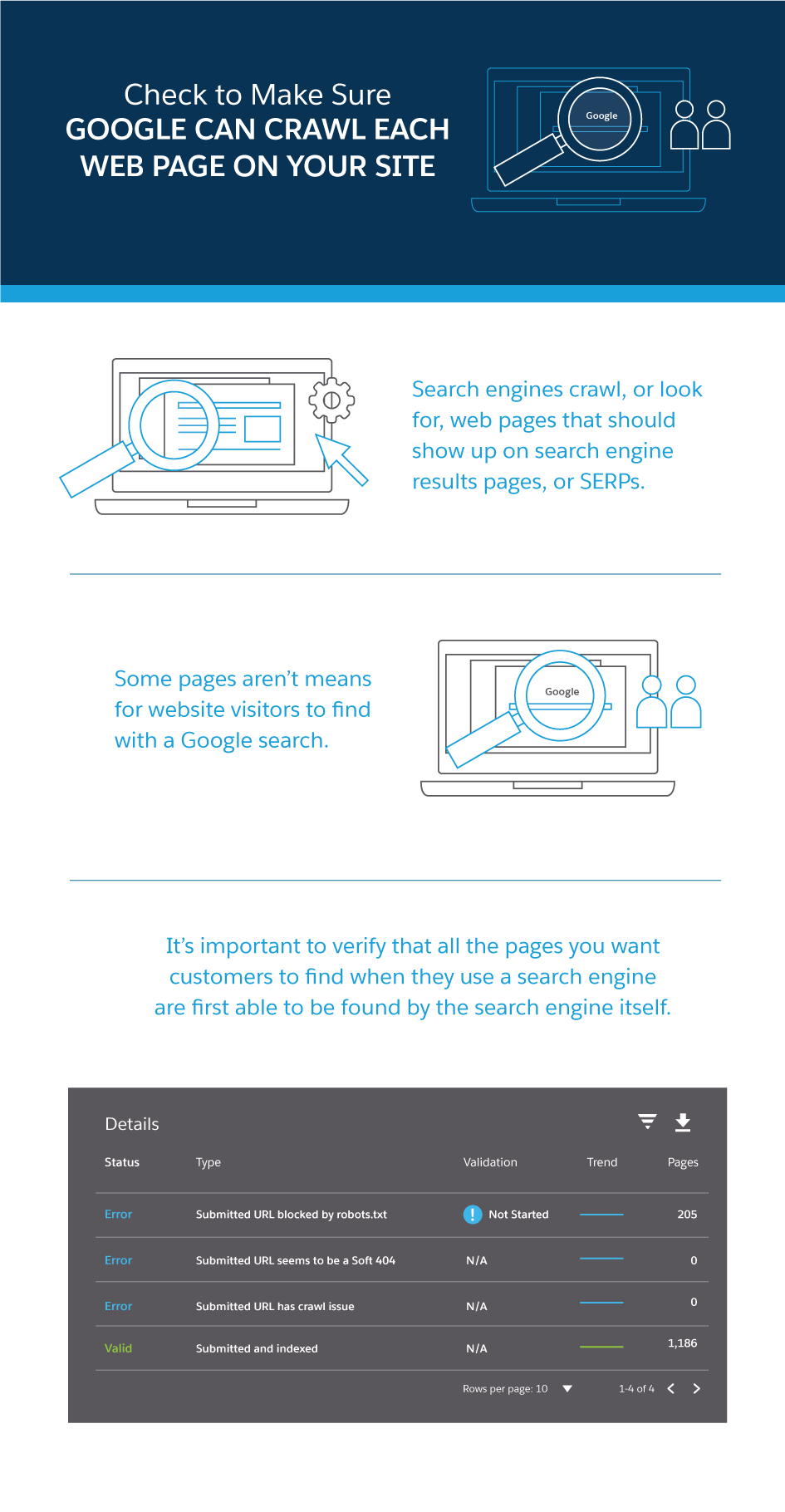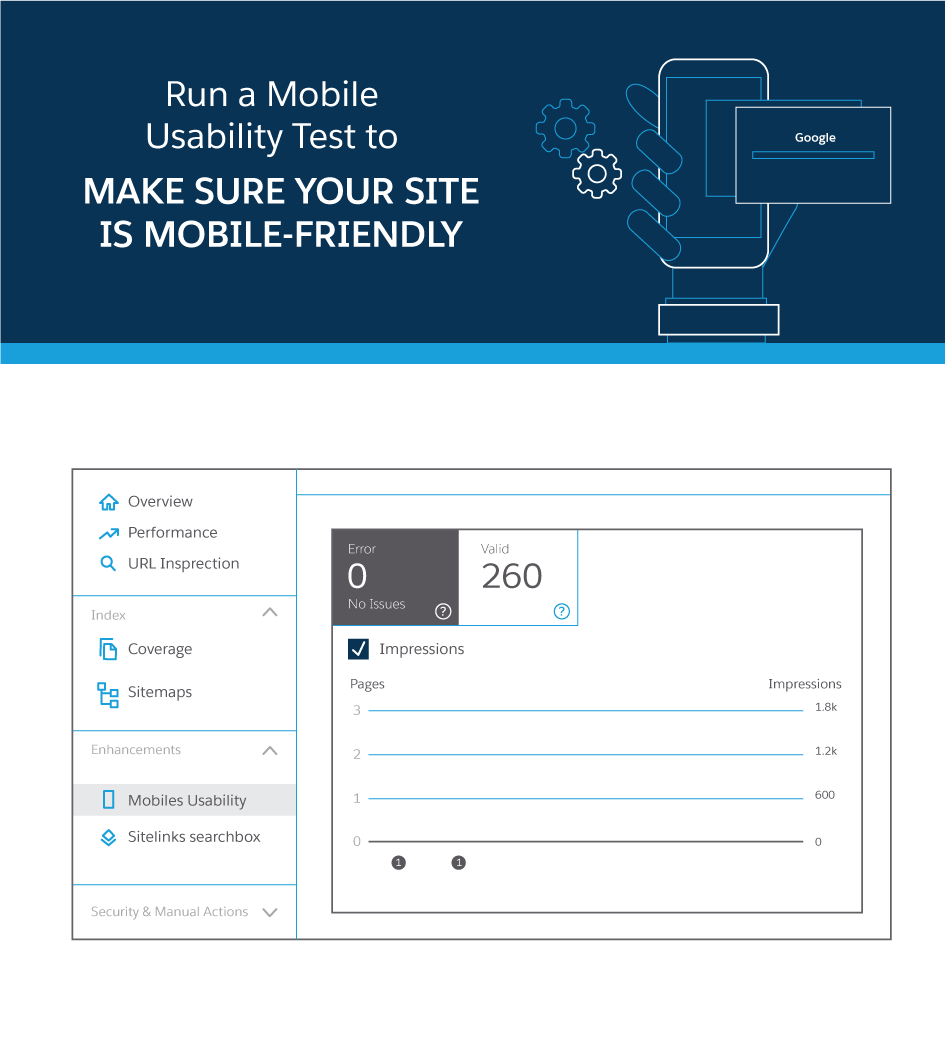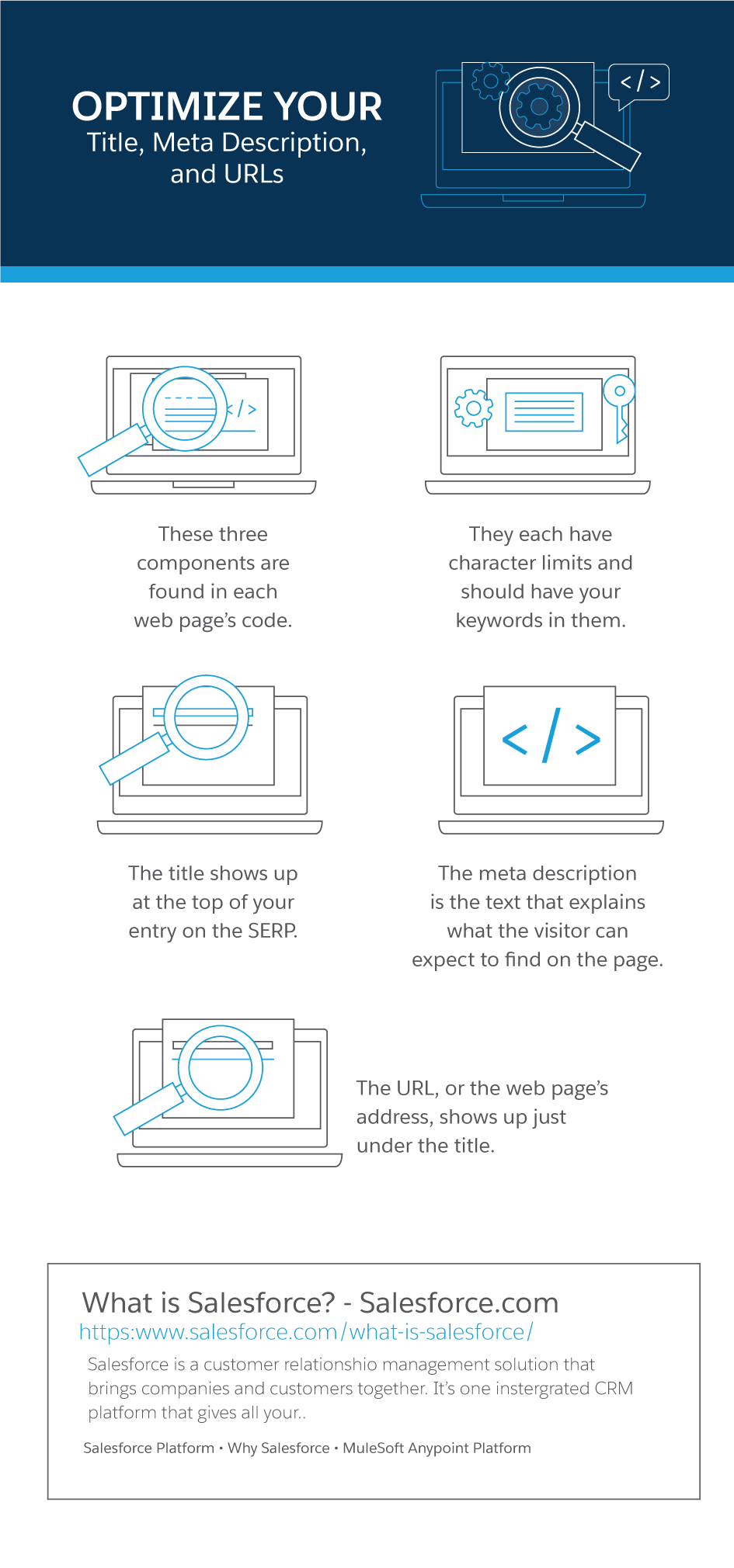Getting online visibility is hard for any website, but for an SMB site it’s a constant struggle. Small business owners don’t generally have the search engine optimization (SEO) skills and resources that larger sites do, but their business still depends on how well they optimize for search and how many customers they are able to attract from Google.
In order to help you navigate the maze of search optimization, let’s focus on the four main things you can do to get fast SEO results.
Four steps to get organic traffic from Google
Every site owner’s dream is to have a constant flow of visitors from Google. The data confirms that organic search brings 50 per cent of visits to a large set of domains. But not every site has similar chances of being easily found by its target audience, and for small business owners, it’s a matter of life and death: Their website must attract new customers because their survival relies on it.
This is what search engine optimization is for. This digital marketing discipline centres upon increasing the chances of a website appearing at the top search results for relevant search queries.
In this post, we want to share with you what kind of SEO techniques small business owners need to focus on to increase the likelihood of their websites being found by their potential customers.

1. Ensure your site meets basic Google requirements.
Many SEO “gurus” claim that the foundation of SEO success is great content. Even though that’s partially true, this is not the place to start. To get organic visitors, your site first needs to meet basic Google requirements, without which any further optimization steps are useless.
Pages that you want to be crawled by Google must be accessible.
For detailed information on how Google search works, let’s refer to Google's instructions. Basically, in order for Google to display your website’s pages in its search engine results pages, or SERP, Google needs to crawl them and register them in its index.
That means that every one of your website’s pages should be accessible to Google’s crawling bot. All pages are open for crawling by default, but sometimes website owners hide certain pages from indexing. This can be done for a variety of reasons: for example, when those pages have no value for users.
Your main goal is to make sure that everything that needs to go to search is accessible to the crawler. To check for any crawling issues, go to your Google Search Console and run the Crawling Report.
In the screenshot below, you can see that the analyzed website has 205 URLs, or web addresses, closed off from indexation.

The first thing to do in this situation is to manually analyze each closed link to find out whether the hidden page should, indeed, be blocked from search, and fix any pages that should show up on SERPs.
Your site should be mobile-friendly.
People all around the world have smartphones, and in some countries, including the U.S., the number of portable devices has overcome the number of personal computers. People use their mobile devices to communicate, look for information, and find products and services. The majority of your customers are likely using their smartphones to look for things online, so optimizing your website for mobile search is critical in order to interact with your audience.
Mobile friendliness is the characteristic of a website that describes whether it is convenient for users to use your site when they access it on their mobile devices. That means they don’t need to pinch or zoom in to read the text, see the pictures, or perform any operations.
Transitioning a website from a desktop to mobile version involves reorganizing the content from the desktop version in a way that’s convenient to consume on mobile devices. If your website was built with the help of a responsive template or theme, going mobile will be free for you and fairly easy.
If not, creating a mobile-friendly website very much depends on the resources you have at your disposal. In some cases, it’s easier to create a new site from scratch and fill it with your old content rather than restructure its existing desktop version.
If you’re not sure whether your site is mobile friendly, you can take the Mobile Friendliness Test. To get more detailed information, go to your Google Search Console and check whether any of your pages crawled by Google have any mobile usability issues.

Here are the general recommendations from Google itself:
If your site was built with the help of a third-party website software, refer to the Customize Your Website For Mobile Users guidelines.
If you're getting ready to build a mobile-friendly site, choose responsive web design.
Check your site speed.
Today, internet users have little tolerance for slow website loading. Even for load times of three to five seconds, there’s room for improvement.
Additionally, Google indicates that site load speed is one of the key signals that it uses for prioritizing websites in search results.
To analyze your site speed, you can use Google’s tool, PageSpeed Insights, or independent tools such as GTmetrics.
2. Invest in keyword research.
When people use Google to look for information, they get a list of sites that are relevant to their search query. Thus, Google’s main goal (and the primary goal of any search engine people use) is to provide the searcher with the necessary, most relevant information in as little time as possible. To do that, it prioritizes the pages according to numerous ranking factors, including their relevance to the search term, or keyword.
Modern SEO implies a sort of reverse engineering of Google’s prioritization mechanism. When certain factors are considered crucial for high rankings, SEO specialists invest their time in implementing those factors on their site. When it comes to keywords, the ultimate goal is to find the exact search terms your target audience uses to come to your site, and then optimize your content for it. These keywords can be revealed during keyword research, and the importance of this step for achieving visibility in search can’t be overstated.
One of the main purposes of keyword research is to understand how, exactly, users are finding your products and services. It includes understanding the users’ intent, their search behaviour while looking for similar offerings, what kind of products are of highest demand, what the general capacity of the niche is, and much more.
This would all be practically impossible without the right analysis tools. For instance, Google Keyword Planner allows you to put together a list of all search terms that people use to find products in a particular niche. This tool also shows the average number of monthly searches for each keyword, how competitive the keyword is in Google ads, and a number of other metrics.
SEO as a discipline only covers non-paid search — that is, the organic search results. Every SERP usually also features ads, but pages only appear there if you invest in that specific type of advertising, called paid search. Keyword search volume, difficulty (the level of competition for that keyword), and other metrics from the Keyword Planner tool describe the state of things in paid search, but you can use them to adjust your SEO strategy, too. In the majority of cases, the competition in ads equals the competition in organic results, so the data about paid search is useful for SEO specialists.
Here’s another quick tip: Commercial terms, or keywords that are associated with a strong intent to buy a product or a service, always have the highest level of competition in both paid and organic results.

In the event you don’t know where to start when putting together an initial list of keywords, you can check which keywords your competitors are ranking for in Google. Here is a list of tools that should help you with competitor keyword research.
3. Optimize your title, meta description, and URLs.
The keywords and search phrases you uncovered in the previous step now need to be used on your site on the pages that have relevant content. Besides putting them in the text and content on each webpage, you must also put them in the title, meta description, and URL of the page.
The title, meta description, and URL are short bits of text allocated in the page’s code. All of them are used in a snippet preview for every site that appears on Google’s SERPs.

The more persuasive and relevant the copy, the higher the chances are that the user is going to click on that result and visit the website.
Hint: If you’re not sure how to make your search snippets more compelling, get inspiration from the ad copy for paid search results on the SERP. Usually, ads are super-optimized because ad managers constantly analyze the effectiveness of their messaging and only place ads with the highest chances of persuading the user to click on them.
4. Create compelling content.
While it may not be the foundation for your website’s SEO, content is the bread and butter of your website’s pages. Without it, your site won’t rank high in Google no matter how well you optimize your site.
The search phrases you uncovered at the keyword research stage work as topics that you could cover in your content. Furthermore, your content should be truly useful and help users find answers to their questions.
It’s always a good idea to create educational content such as guides, how-tos, best practices articles, and case studies. These types of content are usually greatly appreciated by Google users.
However, another important factor is content quality. In 2019, it’s not enough to make a compilation of 20 similar blog posts just to start ranking in Google. Your content pieces should be unique, preferably written by people who know your industry inside and out. Producing poor-quality content won’t result in anything but wasted time and money, since these pages won’t rank high in search results.
In case you’re on a shoestring budget, you can ask your loyal customers to verify your content — or even use them as a source of inspiration. Schedule a short interview and ask your customer about the way your products help them in their job or personal life. Turn the insights they shared into a meaningful article. You can also create an online survey to back your conclusions with more data. If a customer isn’t available to interview or you just want more content ideas, you can go to Reddit, find the subreddit relevant to your industry, peruse the posts there, and ask users to validate your content ideas.
Final thoughts
SEO is a highly time-consuming activity requiring substantial effort and expertise. The points mentioned in this post are only a foundation for future optimization that involves many methods and techniques. The exact steps to properly optimize your website can only be revealed with iterations and should be monitored and adjusted along the way.
If you’re not confident that you can handle your search engine optimization yourself, don’t hesitate to hire a professional, well-vetted consultant to help you. It will allow you to focus on developing your business instead of experimenting in an unfamiliar, technical area.
Basic knowledge of SEO is always useful. It helps you understand, evaluate, and control the optimization performed by a consultant. Additionally, it gives you an idea of the scope of work that needs to be done. Usually, it takes at least six months for SEO efforts to start paying off in higher rankings and more traffic, so get ready to give it some time. Your commitment to SEO is a long-term, very important part of your online marketing strategy, and it will pay dividends when it’s done right.
Share "Search Engine Optimization (SEO) for Uninitiated SMB Owners" On Your Site



